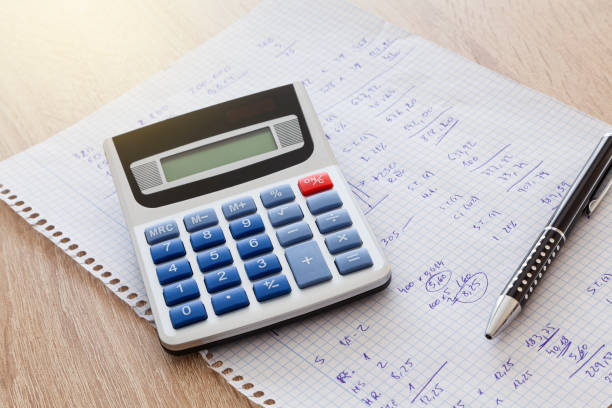Mathematics is a universal language that teaches children logical reasoning, problem-solving, and critical thinking skills. For students in primary school, math is more than just numbers; it is about building the foundation for lifelong learning. At Primary 3, the curriculum takes an important leap forward, requiring children to move from basic arithmetic towards more complex concepts such as fractions, geometry, and word problems. This stage often becomes a turning point where students either develop confidence in math or begin to struggle.
Why Focus on Primary 3 Math?
Many parents recognize that Primary 3 Math is a crucial stage in their child’s academic journey. At this level, students are introduced to new topics that require deeper conceptual understanding rather than rote memorization. While earlier grades focus largely on addition, subtraction, multiplication, and division, Primary 3 expands into areas that demand logical reasoning, visualization, and multi-step problem solving.
Without proper guidance, some children may find it challenging to keep pace with these new concepts. Providing structured support ensures that they not only meet academic requirements but also develop the confidence to approach math with curiosity rather than fear.
Key Concepts Introduced at the Primary 3 Level
At this stage, math lessons cover a broad range of topics that build on earlier foundations:
- Multiplication and Division Mastery: Moving beyond simple tables, students apply multiplication and division in real-life word problems.
- Fractions: Children are introduced to the concept of parts of a whole, comparing fractions, and performing simple operations with them.
- Geometry: Shapes, angles, and spatial reasoning begin to take shape in the curriculum, sharpening visualization skills.
- Measurement: Length, mass, time, and money become practical lessons that connect mathematics to everyday life.
- Problem Solving: Word problems are emphasized, requiring children to translate written scenarios into mathematical equations.
Each of these topics requires not only understanding but also application, which can be difficult without additional practice and guidance.
The Role of Problem-Solving in Math
One of the most significant shifts in Primary 3 math is the increased focus on problem-solving. Children are now expected to interpret questions, analyze information, and decide on the correct mathematical operations to use.
This skill goes beyond exams. Problem-solving develops critical thinking, teaching students how to break down challenges into smaller, manageable steps. Whether in mathematics or in everyday life, the ability to reason logically is invaluable.
Building Confidence Through Practice
For many children, math anxiety stems from repeated struggles with difficult questions. Regular, structured practice helps eliminate this fear. By working through a variety of exercises, children gradually build confidence and become comfortable with tackling unfamiliar problems.
Confidence is a key factor in mathematics. A student who believes in their ability to solve problems is more likely to persevere, while one who feels defeated may avoid the subject altogether. Consistent encouragement and positive reinforcement can make all the difference.
The Connection Between Math and Real Life
At Primary 3, students begin to see the practical applications of math in their daily routines. From calculating change at a shop to measuring ingredients in a recipe, the subject moves beyond abstract numbers.
Relating math concepts to real-world examples helps children understand the value of what they are learning. It makes lessons more engaging and allows students to appreciate that math is not just a subject in school but a tool for life.
Overcoming Common Challenges in Primary 3 Math
Many students face difficulties in certain areas, such as fractions or lengthy word problems. These challenges often stem from gaps in earlier foundations. For instance, a child who is not confident in multiplication may find fractions especially confusing.
The best way to overcome these challenges is through patient explanation, step-by-step learning, and consistent revision. Breaking down complex problems into simpler parts helps children grasp difficult concepts more effectively.
Developing Lifelong Skills Through Math
While exams are often the immediate concern for parents and students, the larger goal of learning math is to develop life skills. Mathematics teaches persistence, logical reasoning, and attention to detail—all qualities that benefit students far beyond the classroom.
By mastering Primary 3 math, children are not only preparing for the next academic level but also strengthening skills they will use in science, technology, and even daily decision-making.
The Role of Parents in Supporting Math Learning
Parents play an important role in shaping their child’s attitude toward math. Encouraging regular practice, praising effort rather than just results, and showing interest in their child’s progress can greatly influence motivation.
Simple activities at home, such as solving puzzles, measuring ingredients while cooking, or budgeting pocket money, can reinforce classroom lessons in enjoyable ways. When children see math applied in meaningful contexts, their enthusiasm naturally grows.
Preparing for Examinations
Exams at the Primary 3 level often test not only knowledge but also application. Time management, accuracy, and careful reading of questions become essential. With proper preparation, students can enter examinations with greater confidence and reduced anxiety.
Mock papers, timed drills, and revision exercises are effective ways to ensure readiness. More importantly, students learn to approach exams strategically, avoiding common mistakes and applying what they have learned consistently.
Conclusion
Primary 3 marks a critical point in a child’s mathematical journey. The curriculum shifts from simple calculations to more complex reasoning, making it a stage where strong support is essential. By focusing on building solid foundations, encouraging problem-solving, and relating math to real life, students develop both competence and confidence.
With the right guidance and consistent practice, Primary 3 math becomes not a hurdle but an opportunity—an opportunity to nurture critical thinking, build resilience, and lay the groundwork for future academic and personal success.

